
The 240sx manual transmission is renowned for its durability and performance capabilities. Popular options like the KA and CD009 transmissions offer smooth shifting and enhanced strength, catering to both street driving and racing enthusiasts. Manual transmissions provide better control, fuel efficiency, and cost-effectiveness compared to automatics, making them a preferred choice for drivers seeking an engaging experience.
1.1 Overview of the 240sx Manual Transmission
The 240sx manual transmission is a highly sought-after component for its blend of durability, performance, and driver engagement. Designed to pair seamlessly with engines like the KA24DE and SR20DET, it offers precise control and smooth shifting. The transmission is available in both 5-speed and 6-speed configurations, catering to diverse driving needs. Its lightweight design and compact structure make it ideal for the 240sx chassis, ensuring optimal weight distribution and handling. Enthusiasts appreciate its strength and reliability, whether for daily driving or performance upgrades. The manual transmission enhances fuel efficiency and reduces maintenance costs compared to automatics, making it a preferred choice for those seeking a more connected driving experience.
1.2 Importance of Manual Transmissions for Performance
Manual transmissions are integral to unlocking the 240sx’s full performance potential. They provide direct control over gear shifts, enabling precise power delivery and quicker acceleration. Unlike automatics, manuals eliminate torque converter slippage, ensuring maximum power transfer to the wheels. This makes them ideal for spirited driving and racing applications. Additionally, manual transmissions are lighter and less complex, reducing overall vehicle weight and improving handling. They also offer better fuel efficiency, especially in city driving, due to the elimination of automatic transmission power loss. For enthusiasts, the tactile feedback and driver engagement of a manual transmission enhance the overall driving experience, making it a preferred choice for performance-oriented modifications and upgrades.
1.3 Brief History of the 240sx and Its Transmission
The Nissan 240sx, produced from 1989 to 1998, was a sporty coupe and hatchback known for its agile handling and rear-wheel-drive layout. The S13 and S14 generations became iconic for their balance of performance and affordability. The 240sx featured the KA24DE engine, paired with a 5-speed manual transmission, which quickly gained a reputation for durability and smooth shifting. The FS5W71 transmission, in particular, was praised for its reliability and timeless design. These transmissions played a crucial role in the 240sx’s popularity among enthusiasts, offering a blend of performance and practicality. Their enduring appeal has made them a staple in the automotive community, with many still seeking these transmissions for swaps and upgrades today.
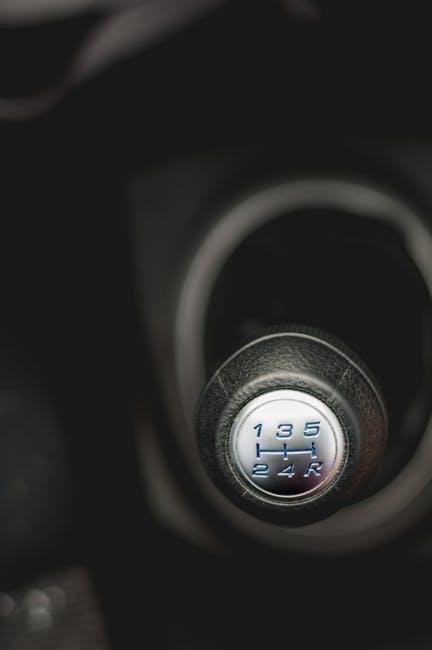
Compatible Manual Transmissions for the 240sx
The 240sx supports various manual transmissions, including the KA, CD009, SR20DET, and FS5W71, each offering unique strengths like durability, power handling, and smooth shifting for diverse driving needs.
2.1 KA Transmission: Features and Compatibility
The KA transmission is a popular choice for the 240sx, offering smooth shifting and reliability. Designed for the KA24DE engine, it provides excellent compatibility and ease of installation. Known for its durability, the KA transmission is well-suited for stock setups and moderate power upgrades. It’s a cost-effective option, often recommended for drivers who don’t require high-performance capabilities. The KA transmission is also lightweight, contributing to better fuel efficiency and handling. While it may not handle extreme power boosts, it’s ideal for everyday driving and light racing. Its compatibility with the 240sx chassis makes it a favorite among enthusiasts, and its resale value remains strong due to its reliability and widespread use.
2.2 CD009 Transmission: Strengths and Power Handling
The CD009 transmission is highly regarded for its strength and ability to handle higher power levels, making it a top choice for performance-oriented 240sx builds. Designed to withstand increased torque, it’s ideal for heavily modified engines or turbocharged setups. The CD009 offers precise shifting and durability, ensuring consistent performance under demanding conditions. While it requires additional modifications, such as a bellhousing adapter and driveshaft adjustments, the benefits justify the effort. Its robust construction and reliability make it a favorite among enthusiasts seeking a transmission that can keep up with aggressive driving styles. Whether for track use or street performance, the CD009 delivers exceptional power handling and responsiveness, solidifying its reputation as a premium upgrade for the 240sx.
2.3 SR20DET Transmission: 6-Speed Configuration
The SR20DET transmission offers a 6-speed configuration, designed specifically for the turbocharged SR20DET engine, providing enhanced gear control and driving dynamics. This transmission is a popular upgrade for 240sx enthusiasts, delivering smooth shifting and precise power delivery. Its 6-speed design allows for better acceleration and control, especially in performance-driven scenarios. While it requires specific compatibility with the SR20DET engine, the improved performance and responsiveness make it a sought-after choice. The 6-speed configuration ensures optimal gear ratios for both street driving and track use, making it a versatile option for enthusiasts seeking enhanced performance without compromising reliability. This transmission is a key component for those aiming to maximize the potential of their turbocharged 240sx setup.
2.4 FS5W71 Transmission: Durability and Timelessness
The FS5W71 transmission is a testament to durability and timeless design, built for the Nissan 240SX and 300ZX from 1984 to 1998. Designed for both L4 and V6 engines, it offers a reliable 5-speed manual experience. Known for its robust construction, the FS5W71 has withstood the test of time, making it a favorite among enthusiasts. Its compatibility with various engine setups ensures versatility, while its straightforward design minimizes complexity. The transmission’s enduring popularity stems from its ability to handle daily driving and moderate performance without compromising reliability. With proper maintenance, the FS5W71 continues to deliver smooth shifting and consistent performance, solidifying its reputation as a durable and timeless choice for 240SX owners seeking a dependable manual transmission.
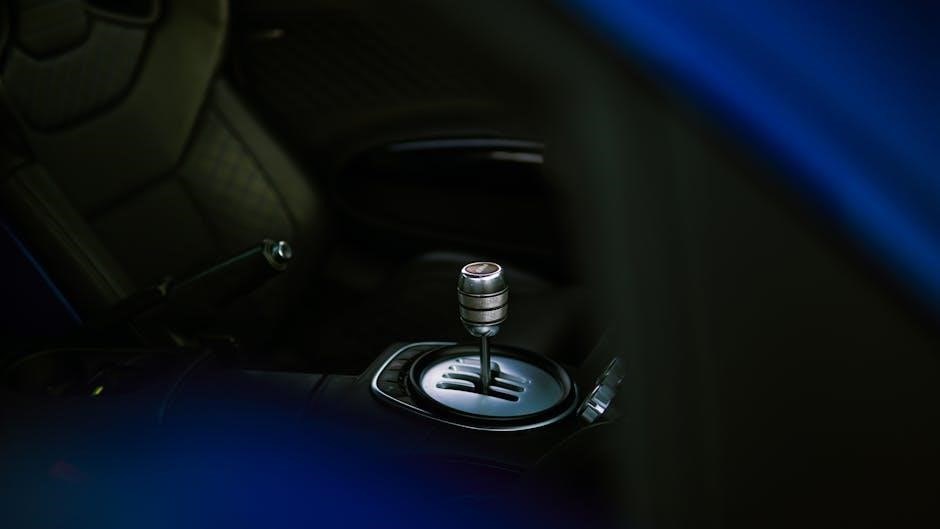
Manual Transmission Swap Guide
A popular modification for 240SX enthusiasts, the manual transmission swap enhances performance and control. It involves removing the automatic transmission, installing a compatible manual unit, and modifying components like the pilot bearing and driveshaft. Essential tools include a pilot bearing puller and transmission jack. Proper alignment and installation are critical for smooth operation. Consulting detailed guides and forums can help avoid common pitfalls. With careful planning and execution, the swap offers improved driving dynamics and engagement, making it a rewarding project for DIY enthusiasts.
3.1 Planning the Swap: Budget and Research
Planning a manual transmission swap for your 240SX is crucial for a successful and stress-free experience. Start by determining your budget, as costs can range from $400 to $500 for parts, tools, and labor if done yourself. Research compatible transmissions, such as the KA or CD009, and ensure they align with your engine setup. Gather all necessary tools, including specialized ones for pilot bearing removal and driveshaft modifications. Understand the scope of modifications required, such as boring shifter holes or shortening the driveshaft. Consult forums, guides, and tutorials to avoid common pitfalls. Plan for potential challenges, like harness and ECU adjustments, and ensure you have all parts before starting. A well-organized plan will save time and prevent unexpected issues during the swap.
3.2 Essential Parts and Tools for the Swap
For a successful manual transmission swap in your 240SX, you’ll need specific parts and tools. Start with a compatible manual transmission, such as the KA or CD009, ensuring it matches your engine setup. A pilot bearing puller and installer are essential for replacing the pilot bearing. A throw-out bearing sleeve and clip are also necessary. If modifying the driveshaft, a lathe or cutting tools may be required. Additional components include a manual transmission harness, adapter plate, and crossmember. Tools like a dial indicator, socket set, and wrenches are crucial. Don’t forget a new clutch kit and transmission mounts. A transmission jack or cherry picker can simplify the process. Gather all parts and tools beforehand to avoid delays. Optional upgrades, such as a lightweight flywheel or performance clutch, can enhance the swap’s effectiveness. Ensure compatibility and quality of all components to guarantee reliability and performance.
3.3 Step-by-Step Installation Process
Begin by removing the automatic transmission, taking care to unbolt the torque converter for easier removal. Install the manual transmission, ensuring proper alignment with the engine. Replace the pilot bearing using a puller and installer tool. Next, modify the driveshaft to fit the new transmission, shortening it as needed. Connect the shifter assembly and linkages, ensuring smooth operation. Install the clutch kit, aligning it properly with the flywheel. Attach the throw-out bearing and sleeve, securing them with the provided clip. Reconnect the transmission harness to the ECU, making any necessary wiring adjustments. Finally, bleed the clutch system and test the transmission to ensure proper engagement and shifting. Follow detailed guides for specific steps and troubleshooting common issues during installation.

3.4 Wiring Harness and ECU Compatibility
Wiring harness and ECU compatibility are critical during a manual transmission swap. A manual transmission harness is required, as the automatic harness may not support manual operation. Ensure the ECU is configured to work with the manual setup, as automatic ECUs often lack the necessary parameters for manual shifting. In some cases, the automatic ECU can be modified to remove restrictions, but an aftermarket ECU may be needed for optimal performance. Wiring modifications may include adding a clutch pedal sensor and adjusting signals for the manual transmission. Consult detailed guides or forums for specific wiring diagrams and ECU settings tailored to your swap. Proper harness and ECU configuration ensure smooth operation and prevent potential issues during the swap.
3.5 Pilot Bearing Replacement: Tips and Tricks
Replacing the pilot bearing is a critical step in the manual transmission swap. For automatic-to-manual swaps, removing the automatic pilot bearing can be challenging due to its design. A slide hammer or punch is often required to extract it. Once removed, inspect the bore for damage or debris. Install the new manual pilot bearing using a press or proper tools to ensure it is seated correctly. Proper alignment and installation are essential to avoid vibration or noise. Some enthusiasts recommend freezing the new bearing to slightly reduce its size for easier installation. Ensure all surfaces are clean and lubricated before installation. A faulty or improperly installed pilot bearing can lead to premature wear or failure, making this step vital for the swap’s success.
3.6 Driveshaft Modification: Shortening and Balancing
Driveshaft modification is essential when performing a manual transmission swap in the 240sx. The automatic and manual transmissions have different input shaft lengths, requiring the driveshaft to be shortened. Typically, the driveshaft needs to be cut and rewelded to match the manual transmission’s specifications, ensuring proper alignment and fitment. This process can be done using a driveshaft shop or DIY tools, but precision is key to avoid vibration issues. Some enthusiasts recommend shortening the driveshaft by approximately 2 inches, depending on the transmission model. Proper balancing after modification is crucial for smooth operation. Failure to modify the driveshaft correctly can lead to drivetrain misalignment, resulting in poor performance or damage. Always ensure the driveshaft is inspected and balanced by a professional to guarantee reliability and safety.
3.7 Troubleshooting Common Issues
Troubleshooting common issues during a 240sx manual transmission swap is crucial for a successful outcome. One frequent problem is incorrect alignment between the transmission and engine, leading to difficulty in mating components. Ensuring the pilot bearing is properly installed and the transmission is aligned correctly can resolve this. Wiring harness and ECU compatibility issues may arise, requiring adjustments to support manual operation. Clutch pedal sensor installation and proper bleeding of the clutch system are essential to avoid spongy or unresponsive pedal feel. Driveshaft vibration can occur if modifications are imprecise, emphasizing the need for professional balancing. Consult detailed guides or forums for specific solutions and wiring diagrams to address these challenges effectively.
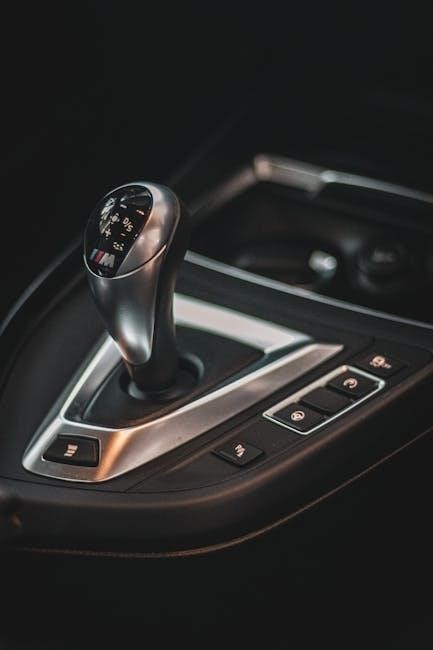
Maintenance and Upkeep of the Manual Transmission
Regular inspection and lubrication are vital for maintaining the 240sx manual transmission. Transmission fluid changes and clutch maintenance ensure smooth operation and prevent premature wear. Proper upkeep enhances durability and performance.
4.1 Regular Inspection and Lubrication
Regular inspection and lubrication are essential for maintaining the 240sx manual transmission’s health. Inspect the driveshaft, transmission mounts, and gear oil levels periodically. Lubricate moving parts like the shifter and linkage to ensure smooth operation. Check for signs of wear or leakage in the transmission seals and gaskets. Replace the transmission fluid as recommended to maintain optimal lubrication and prevent overheating. Grease the pilot bearing and clutch release bearing regularly to avoid friction-related issues. A well-maintained transmission reduces the risk of breakdowns and ensures consistent performance. Schedule inspections every 15,000 to 30,000 miles to catch potential problems early. Proper lubrication and timely repairs extend the transmission’s lifespan and maintain its reliability.
4.2 Transmission Fluid: Types and Change Intervals
For the 240sx manual transmission, using the correct transmission fluid is crucial for optimal performance. The recommended fluid type is typically GL-4 or GL-5, with a viscosity of 75W-90 being ideal for most driving conditions. Regular fluid changes are essential to maintain lubrication and prevent wear. The transmission fluid should be replaced every 30,000 to 60,000 miles, depending on driving habits and conditions. Old or degraded fluid can lead to increased friction, overheating, and premature wear of internal components. Always consult the manufacturer’s specifications for the correct fluid type and change interval. Proper fluid maintenance ensures smooth shifting, reduces the risk of damage, and extends the transmission’s lifespan. Neglecting fluid changes can result in costly repairs, making regular maintenance a priority for enthusiasts.
4.3 Clutch Maintenance: Signs of Wear and Replacement
Clutch maintenance is vital for the 240sx manual transmission, as wear can lead to poor performance and costly repairs. Signs of wear include slipping, noise during shifting, and difficulty engaging gears. A soft or spongy clutch pedal indicates worn components. Regular inspection of the clutch disc, pressure plate, and flywheel is essential. Replacement is typically needed when the friction material is worn down to 1/16 of an inch or less. Proper alignment during installation ensures smooth operation. Neglecting clutch maintenance can result in damage to the transmission or flywheel, leading to expensive repairs. Always use high-quality components and follow manufacturer guidelines for replacement. Regular inspections and prompt action can extend the lifespan of the clutch system and maintain optimal performance.
4.4 Common Repairs and Replacement Parts
Common repairs for the 240sx manual transmission include replacing worn bearings, seals, and gaskets. The pilot bearing, input shaft bearings, and output shaft bearings are frequent replacement points due to wear. Leaks from the transmission case or extension housing seals are also common issues. Replacement parts such as new synchros, gear sets, and clutch kits are often needed for optimal performance. The cost of parts varies, with basic repairs starting around $136.50 for bearings and seals. High-quality components are essential to ensure reliability and longevity. Regular maintenance and inspections can prevent major repairs. Consulting a repair manual or a transmission specialist is recommended for accurate diagnosis and installation. Proper replacement ensures smooth shifting and prevents further damage to the transmission system.
Performance Upgrades for the Manual Transmission
Upgrading the 240sx manual transmission enhances performance through lightweight flywheels, high-performance clutch kits, and gear ratio adjustments. Limited-slip differentials and short shift kits further improve traction and shifting precision.
5.1 Upgrading to a Lightweight Flywheel

Upgrading to a lightweight flywheel enhances the 240sx’s performance by reducing rotational mass, allowing for faster engine revving and improved acceleration. This modification is particularly beneficial for drivers seeking better throttle response and a more engaging driving experience. Lightweight flywheels are ideal for performance-oriented setups, as they minimize inertia and enable quicker gear changes. However, they may increase noise, vibration, and harshness (NVH), which could be a trade-off for street-driven vehicles. When installing, ensure proper alignment with the clutch kit and pressure plate to maintain optimal performance and avoid imbalance. This upgrade is a popular choice among enthusiasts looking to maximize their car’s potential without compromising reliability.

5.2 Performance Clutch Kits: Options and Benefits
Performance clutch kits are a vital upgrade for the 240sx, offering enhanced grip and durability for high-performance driving. These kits typically include a high-friction clutch disc, pressure plate, and bearing, designed to handle increased power and heat. Ceramic or Kevlar materials are common, providing superior resistance to wear and slippage. They are ideal for racing or aggressive driving, delivering quicker engagement and smoother shifts. However, they may increase noise and vibration compared to stock clutches. When installed correctly, performance clutches improve acceleration and reduce the risk of clutch failure under heavy stress. Proper alignment with the flywheel and pressure plate is crucial for optimal performance and reliability, making them a popular choice for enthusiasts seeking enhanced control and responsiveness.
5.3 Gear Ratio Upgrades for Enhanced Performance
Gear ratio upgrades are a key enhancement for the 240sx manual transmission, offering improved acceleration and control. By selecting ratios tailored to your driving style, such as closer ratios for racing or taller ratios for highway performance, you can optimize power delivery. The CD009 transmission, with its robust design, is a popular choice for handling higher power outputs. Additionally, the SR20DET 6-speed configuration provides precise gear control, enhancing overall driving dynamics. Upgrading gear ratios allows for better utilization of engine torque, resulting in faster acceleration and smoother shifting. This modification is particularly beneficial for performance-oriented drivers, enabling the vehicle to perform at its peak potential in various driving conditions. Proper alignment with engine specifications ensures maximum efficiency and responsiveness, making gear ratio upgrades a strategic choice for enthusiasts seeking enhanced performance.
5.4 Limited-Slip Differential: Improving Traction
A limited-slip differential (LSD) is a highly effective upgrade for the 240sx manual transmission, enhancing traction and stability. By distributing power between the wheels, the LSD reduces wheelspin and improves acceleration, especially during cornering. This upgrade is particularly beneficial for performance driving, as it maximizes grip and control. The LSD works by using clutches or helical gears to transfer power to the wheel with more traction, minimizing loss of control. For track-focused drivers, a mechanical LSD is ideal, while electronic LSDs offer versatility for street and track use. Installing an LSD complements the manual transmission’s precision, delivering smoother power delivery and enhanced handling. This modification is a cornerstone for enthusiasts seeking to elevate their 240sx’s performance capabilities and driving dynamics.
5.5 Short Shift Kits: Reducing Shift Throw
Short shift kits are a popular upgrade for the 240sx manual transmission, designed to reduce shift throw and enhance shifting precision. These kits typically include modified shifters and linkages that minimize the distance the shifter travels, resulting in quicker and more responsive gear changes. By shortening the throw, drivers can enjoy faster transitions between gears, improving acceleration and control during spirited driving. Brands like Megan Auto and Gktech offer high-quality short shift kits tailored for the 240sx, ensuring compatibility and durability. This upgrade is particularly beneficial for track enthusiasts, as it enhances the overall driving experience and reduces shift lag. A short shift kit is a simple yet effective modification to elevate the performance of your manual transmission setup.
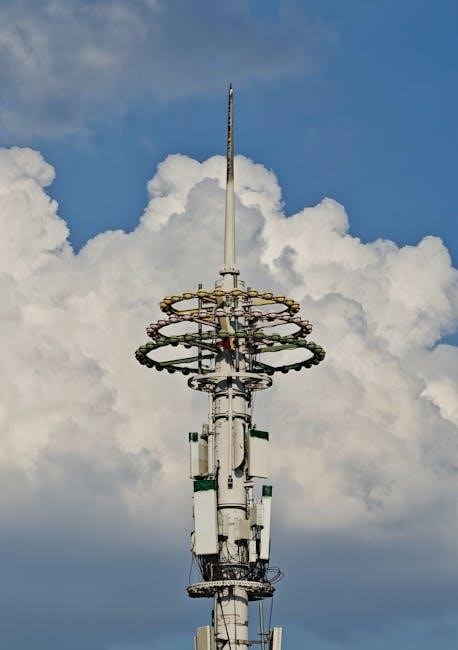
Cost Considerations and Budgeting
Budgeting for a 240sx manual transmission swap typically ranges from $400 to $500 for parts and tools. DIY installation saves labor costs, while professional help increases expenses. Planning ahead and considering future upgrades helps allocate funds effectively.
6.1 Budgeting for the Manual Transmission Swap
Budgeting for a 240sx manual transmission swap requires careful planning, with total costs typically ranging from $400 to $500 for parts, tools, and labor if done DIY. The KA transmission is a cost-effective option, while the CD009 offers higher power handling at a slightly increased cost. Additional expenses include a pilot bearing, driveshaft modifications, and a clutch kit. Future upgrades, such as a lightweight flywheel or performance clutch, should also be considered. Researching compatible parts and tools beforehand helps avoid unexpected costs. Consulting forums and guides can provide insights into cost-effective solutions and potential savings. A well-organized budget ensures a smooth and successful swap, balancing performance goals with financial constraints.
6.2 Cost-Effective Parts and Tools
Acquiring cost-effective parts and tools is essential for a budget-friendly 240sx manual transmission swap. The KA transmission is a economical choice, while the CD009 offers higher performance at a moderate cost. Essential tools include a pilot bearing puller and installer, driveshaft modification tools, and a clutch kit. Sourcing parts from eBay or specialty stores can help reduce expenses. Consider budget-friendly brands like Megan Auto for mounts or P2M for polyurethane components. Driveshaft shortening can be done DIY or outsourced affordably. Clutch kits and lightweight flywheels are also cost-effective upgrades. Prioritizing quality over price ensures reliability while staying within budget. Researching and comparing prices helps maximize savings without compromising performance.
6.3 DIY vs. Professional Installation: Cost Comparison
A DIY manual transmission swap for the 240sx can cost between $400 and $500, covering parts, tools, and labor, making it a cost-effective option for skilled enthusiasts. Professional installation, however, can exceed $1,000, depending on labor rates and shop expertise. DIY requires time, mechanical skills, and specialized tools, but saves significantly on labor costs. Professional services offer convenience, expertise, and warranty benefits, ideal for those lacking experience. Budget-conscious owners often opt for DIY, while others prefer the reliability of professional work. Weighing skills, time, and budget is crucial for deciding the most economical approach. Both options can deliver a successful swap, but DIY offers substantial savings for the hands-on enthusiast.
6.4 Long-Term Savings: Fuel Efficiency and Maintenance
Manual transmissions in the 240sx offer long-term savings through improved fuel efficiency and reduced maintenance costs. Manuals typically consume less fuel than automatics, especially in city driving, due to the elimination of power loss from torque converters. Over time, this translates to lower fuel expenses. Additionally, manual transmissions have fewer complex components, reducing the likelihood of costly repairs. The KA and CD009 transmissions, for instance, are known for their reliability and durability, minimizing long-term maintenance needs. Furthermore, manual transmissions often retain higher resale value, appealing to enthusiasts. These factors make a manual transmission swap a financially savvy choice for both performance and practicality, providing lasting benefits for drivers.
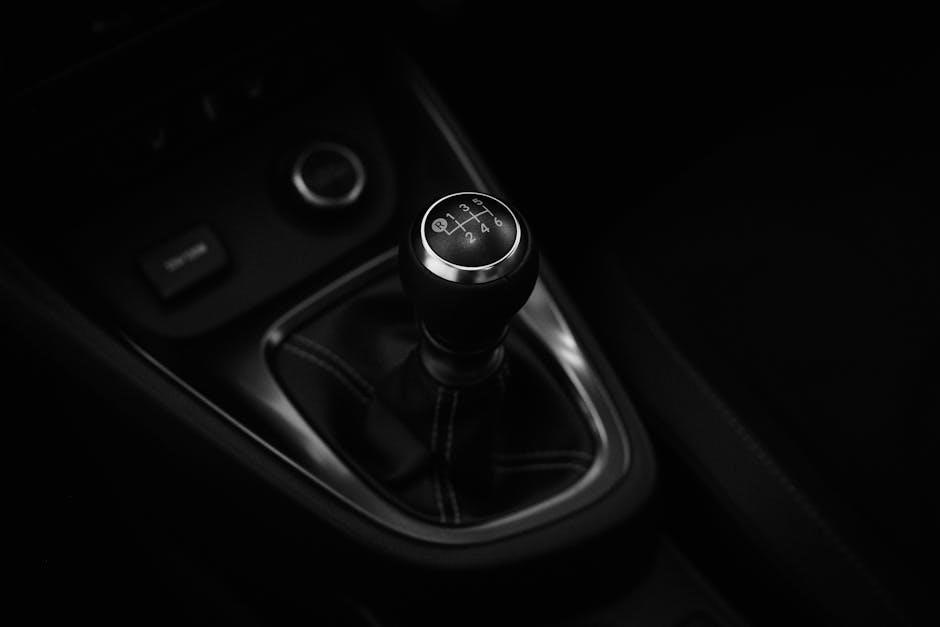
Community and Resources
The 240sx manual transmission community is vibrant, with online forums like Reddit and Facebook Groups offering valuable insights and support. Local meetups and workshops provide hands-on learning opportunities, while specialized shops cater to enthusiasts’ needs, ensuring access to expert advice and quality parts.
7.1 Online Forums and Communities
Online forums and communities are invaluable resources for 240sx manual transmission enthusiasts. Platforms like Reddit, Facebook Groups, and specialized forums host vibrant discussions, offering troubleshooting tips, DIY guides, and expert advice. These communities provide a space to share experiences, ask questions, and learn from seasoned mechanics and drivers. Many forums feature detailed threads on transmission swaps, maintenance, and upgrades, making them indispensable for both novices and experienced enthusiasts. Active participation in these communities fosters a sense of belonging and ensures access to the latest trends and solutions. Whether seeking advice on compatible transmissions or troubleshooting common issues, online forums are a cornerstone of the 240sx manual transmission culture.

7.2 Local Meetups and Workshops
Local meetups and workshops are excellent opportunities for 240sx enthusiasts to connect, learn, and enhance their manual transmission knowledge. These events often feature hands-on demonstrations, such as transmission swaps and clutch installations, led by experienced mechanics. Workshops provide a platform to gain practical skills, while meetups foster camaraderie among owners. Many local car clubs and garages host these gatherings, offering a space to discuss modifications, share tips, and showcase builds. Attending these events allows enthusiasts to network, learn from experts, and stay updated on the latest trends in manual transmission upgrades and maintenance. They are invaluable for both novices seeking guidance and seasoned owners looking to refine their skills.
7.3 Recommended Shops and Specialists
For enthusiasts seeking professional assistance with their 240sx manual transmission, recommended shops and specialists play a crucial role. Reputable shops like Gktech and P2M offer high-quality transmission components and expert installations. These specialists provide tailored solutions, ensuring compatibility and optimal performance for your setup. Additionally, brands like Megan Auto offer budget-friendly alternatives without compromising on quality. Consulting these experts can save time and ensure a seamless swap or upgrade. Their extensive knowledge and experience with the 240sx platform make them invaluable resources for achieving your performance goals. Whether you’re installing a CD009 or upgrading your clutch, these shops and specialists are essential for a successful and reliable modification.